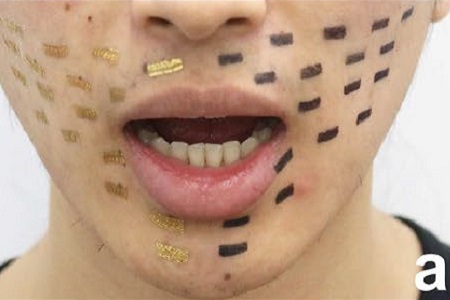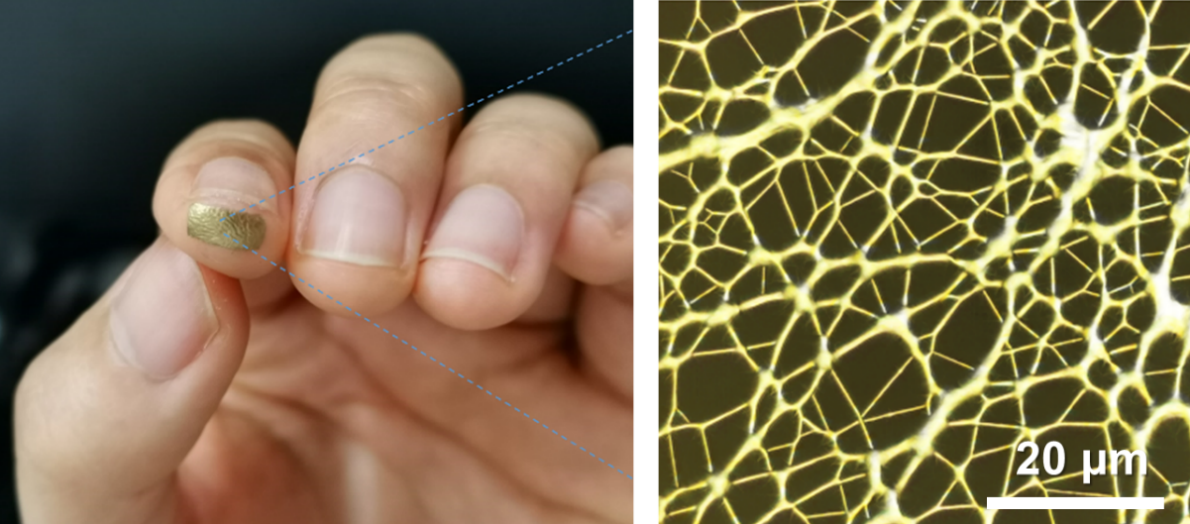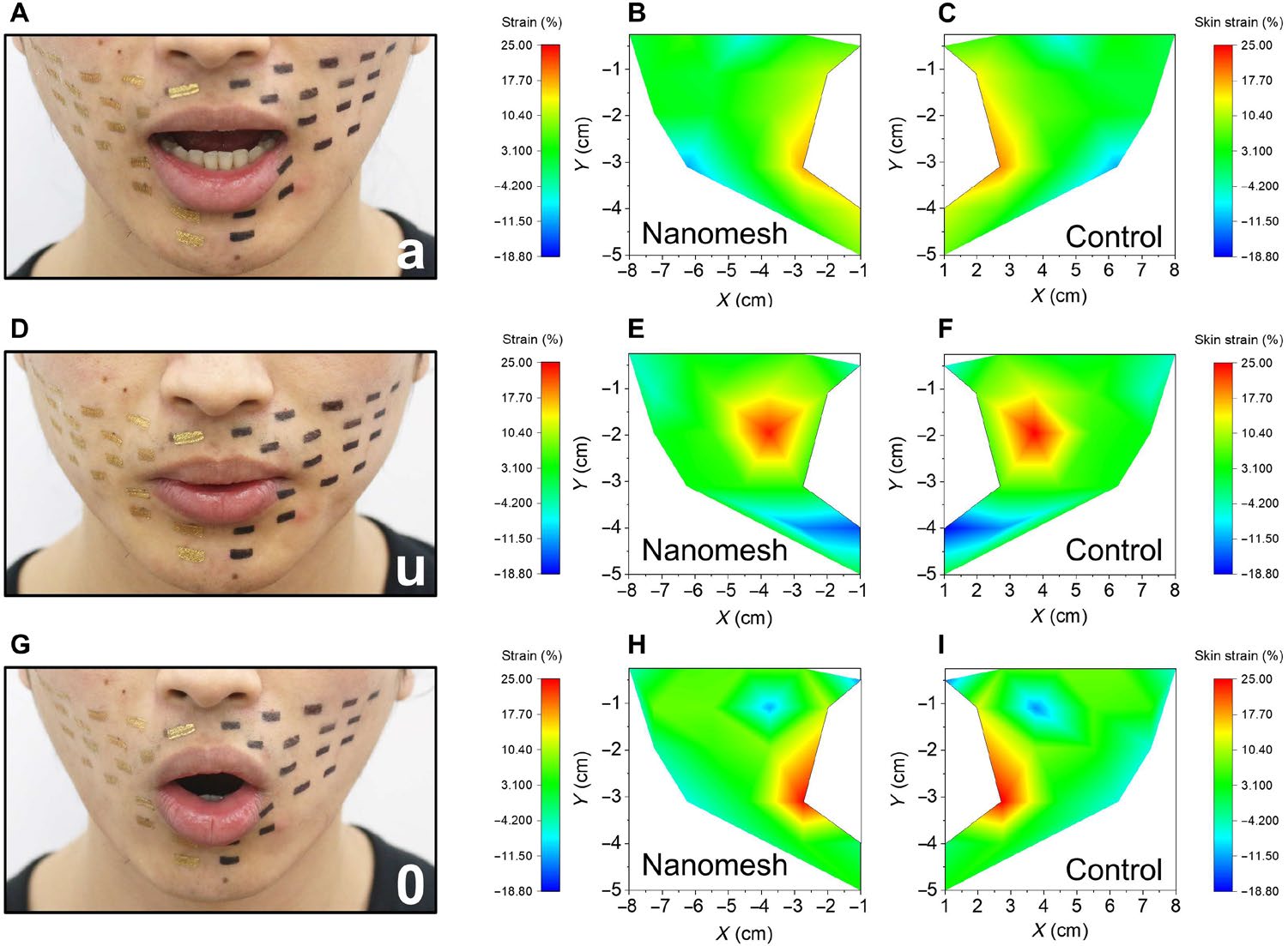Soft sensors can take the strain Soft durable skin sensors capture biometric information despite prolonged use


Webs of gold. A tiny nanomesh sensor on a fingertip (left) and a microscopic image showing the nanofiber mesh coated with gold (right). © 2020 American Association for the Advancement of Science / Someya Group
Researchers demonstrate a novel type of sensor which is applied directly to the skin to capture certain biometric information. Made from nanoscopic fibers, billionths of a meter thick, the nanomesh strain sensor is comfortable to wear for long durations and is durable enough to maintain function over this time. Researchers envisage various health-monitoring applications, as well as a possible way to accurately recognize subtle facial expressions in those with autism spectrum disorders who might have difficulty expressing themselves.
In recent years, there has been growing interest in smart new ways to acquire biometric information on the physical characteristics and biological data of a person for use in medical or lifestyle applications. Wearable devices, such as smart watches, are a relatively convenient way to capture some live data from wearers, but their capabilities and possible applications can be limited. This is partly due to the rigid circuit boards such products are based on, which cannot adapt to soft surfaces.

Lip reading. Data from nanomesh sensors on a subject's face visualized as they say different vowels. © 2020 American Association for the Advancement of Science / Someya Group
For the acquisition of, for example, data relating to movement such as large body motions as well as subtle facial expressions, an ideal sensor would need to be directly attached to the wearer. This means it would need to be strong and durable but also soft and lightweight, all the while being functionally powerful. The Someya Group at the University of Tokyo has just created such a thing.
“Our nanomesh strain sensor is both comfortable and durable as it is made from reinforced polyurethane nanofibers coated with gold,” said Professor Takao Someya. “Using a method called electrospinning, we create functional electronic sensors only 430 nanometers thick with a density of 0.012 milligram per square centimeter. These properties mean our unique sensor can adhere directly to the skin where it measures strain, due to skin motions, without affecting the natural movement of the skin itself.”
One possible application that inspired this particular research is the idea that such sensors could be worn on the face to detect microexpressions — brief, involuntary facial expressions revealing emotions such as happiness, anger, sadness and fear. This could be useful as a diagnostic or therapeutic tool for children with autism spectrum disorders who may have difficulties expressing themselves. The sensor’s presence would go almost unperceived by the wearer, for whom comfort is extremely important.
“When we measured strain deformations on a subject’s facial skin while they spoke, they wore 18 sensors on each side of their face,” said Someya. “The attachment process was lengthy due to a large number of sensors. But what impressed us is that the sensors still functioned after wearing them for 3.5 hours, and still adhered well to the facial skin even after one full day's use.”
Papers
Y. Wang, S. Lee, T. Yokota, H. Wang, Z. Jiang, J. Wang, M. Koizumi, T. Someya, "A durable nanomesh on-skin strain gauge for natural skin motion monitoring with minimum mechanical constraints," Science Advances 6, eabb7043 (2020): August 12, 2020, doi:10.1126/sciadv.abb7043.
Link (Publication )
)





